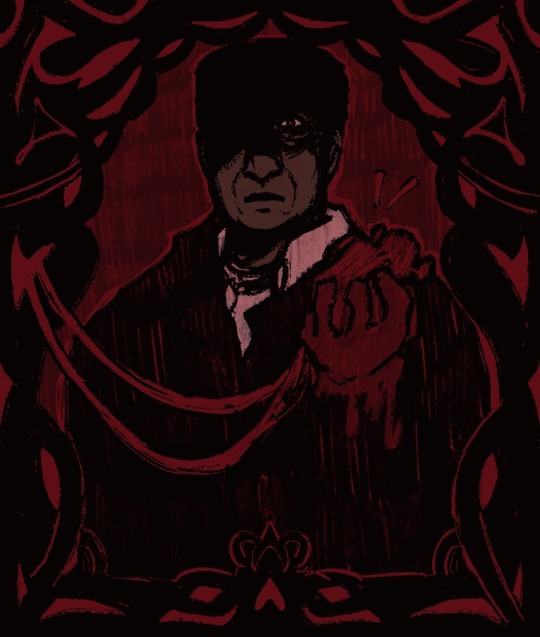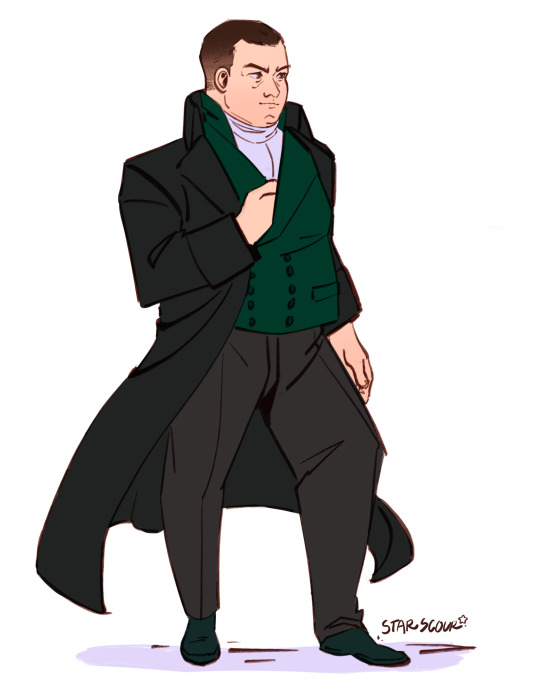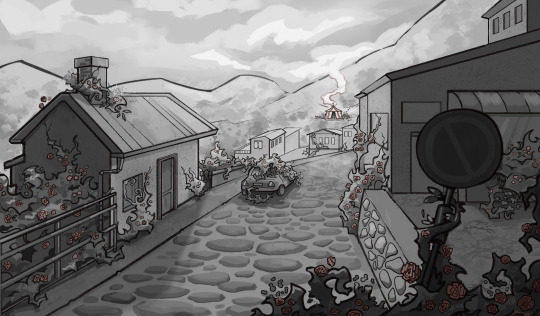#DEI doctors
Explore tagged Tumblr posts
Text

A mother’s light
#arknights#digital illustration#drawing#artwork#vulpisfoglia#suzuran#fanart#anime fanart#chibi art#chibi#anime#anime art#artists on tumblr#arknights fanart#arknights doctor#arknights suzuran#arknights vulpisfoglia#i portatori dei velluti#mothers day#picnic
257 notes
·
View notes
Text

if there’s one thing about me, i love an alignment chart
#doctor who#memes#dweu#expanded universe#edas#eighth doctor adventures#vnas#virgin new adventures#big finish#eighth doctor#compassion#charley pollard#chris cwej#ace mcshane#irving braxiatel#fitz kreiner#the master#sabbath dei#sam jones#iris wildthyme#c’rizz#anji kapoor#my posts
199 notes
·
View notes
Text
quick style experiment with sabbath

49 notes
·
View notes
Text

sabbath commission for @eightdoctor !!
57 notes
·
View notes
Text
People who have not read the EDAS (or this specific book), tell me what you think is going on here.

#im curious#ive been going over this book again and want to know#doctor who#dw#dr who#new who#classic who#tagging to get non-edas people#eighth doctor#doctor who eu#doctor who expanded universe#sabbath dei#eightsabbath#camera obscura#8th doctor#8th#8#edas
143 notes
·
View notes
Text

Y'all. The absolute CAUCACITY of this man!
#doctor who#rtd#sack rtd#fuck rtd#the article is behind a paywall but just use 12ft & you should be fine#in it he says that diverse voices beling in the mail room#not the writers room#as if the 3 most well loved episodes this season were written by diverse witers#and the lowest rated of the entire disney who era was written by him#i looked it up on tardis guide#since the show came back in 2005 only 3 episodes have gotten lower ratings than reality war#and all 3 were in chibnalls run#i have also never seen an episode that was so universally hated online as that one#this man does not get to say that diverse voices do not belong#diverse voices are the only thing keeping the show going#RTD has now entered his JKR era where he is screaming about 'woke dei' like some Boomer in a MAGA hat#it is only a matter of time before he starts saying 'brexit was good actually' and screaming about immigrants stealing jobs#fire rtd and break up the job of show runner into seperate jobs so we can actually make some fucking PROGRESS
16 notes
·
View notes
Text

51 notes
·
View notes
Text

meanwhile on the jonah
#eightsabbath#edas#eighth doctor#sabbath dei#z#posting this as a sowwy ive been too deep in the vampire novels to partake in eighth doctor. resting the fields so to say
41 notes
·
View notes
Text
Based off that one eight book
Credits to

Bald eight under here


24 notes
·
View notes
Text


(submitted by @a-shard-of-quartz-lol)
30 notes
·
View notes
Text


who up chilling on the meat hook???
165 notes
·
View notes
Text
Since taking out one of a time lord's still-beating hearts and sticking it into another person's chest will make them immortal(or at least unkillable ig)...
So theoretically, if 2 guys take out one of their hearts and stick it into each other,
(assuming you both survive the process)
Will it make you both near unkillable unless you both get yourselves killed at the the same time???
#edas#camera obscura#eighth doctor#ngl i can see the doctor and the master being crazy enough to do this shit#doctor who#devs please patch invincibility glitch#doctor who eu#sabbath dei#eighth doctor adventures
8 notes
·
View notes
Text
" Chi sono gli uomini, i quali, senza che noi ce ne accorgiamo, ci suggeriscono cosa pensare, ci dicono chi dobbiamo ammirare e chi disprezzare, oppure come dobbiamo considerare la proprietà dei servizi pubblici, le tariffe doganali, il prezzo del caucciù, il piano Dawes* o l’immigrazione? Sono sempre loro che ci consigliano l’arredamento della nostra casa, il menu quotidiano, il modello di camicia più elegante, gli sport da praticare, gli spettacoli da vedere, le iniziative benefiche meritevoli di aiuto, i quadri degni di ammirazione, e perfino i termini gergali da inserire durante una conversazione e le battute di spirito che ci dovrebbero far sbellicare dalle risate. Se volessimo compilare l’elenco degli uomini e delle donne che per la loro posizione sociale devono essere considerati come opinion maker, avremmo una lunga lista di nomi recensiti nel Who’s Who. […] Una simile lista comprenderebbe migliaia di persone. Tuttavia sappiamo che molte di esse sono a loro volta sotto l’influenza di individui, spesso noti solo a una cerchia molto ristretta. "
*Piano Dawes: definito da una commissione di esperti finanzieri appartenenti alle potenze vincitrici della I Guerra mondiale presieduta dall’americano Charles G. Dawes, contribuì molto alla ripresa del marco e degli investimenti Usa in Germania. [NdT]
---------
Edward Louis Bernays, Propaganda. Della manipolazione dell’opinione pubblica in democrazia, traduzione di Augusto Zuliani, Fausto Lupetti Editore, 2008.
[Edizione originale: Propaganda, New York: Horace Liveright publisher, 1928]
#Edward Louis Bernays#Propaganda#manipolazione#opinione pubblica#democrazia#Augusto Zuliani#masse#società dei consumi#consumismo#XX secolo#capitalismo#Stati Uniti d'America#politica#affarismo#corruzione#relazioni pubbliche#influencer#pubblicità#spin doctor#psicologia delle folle#subconscio#fabbrica del consenso#mente collettiva#irrazionalità#desideri#edonismo#narcisismo#comunicazione#multinazionali#immigrazione
12 notes
·
View notes
Text
Random Doctor Who Facts You Might Not Know, Part 63
Adric had programmed the route back to E-Space into the TARDIS before he died. When the TARDIS came close into a CVE, Adric set the program to automatically travel into E-Space, specifically to Alzarius. This is how the Fifth Doctor, Tegan, Nyssa, and Turlough ended up in E-Space. (Audio: Mistfall)
The Eighth Doctor once took a ton of a drug called Om-Tsor in order to psychically stop a lot of missiles. (Novel: Revolution Man)
Meglos considers himself to be the Doctor's greatest enemy because the Doctor only defeated him once (while they have defeated Daleks, etc many times). (Short story: Meglos)
The Seventh Doctor hates swimming. (Novel: The Also People)
After Sabbath removed the Eighth Doctor's heart and implanted it into his own chest, the Doctor could not die. Even when he was absolutely crushed by sandbags, one of his hearts was still beating in Sabbath's chest, so he would survive. (Novel: Camera Obscura)
The Brigadier liked Persephone a lot. As in he fell in love with her. As in fighting Hades for her. As in kissing her. As in thinking that she had a perfect bum and that she was both delicious and delectable. Yeah. (Novel: Deadly Reunion)
One time, Ace mentioned that it was a bit of a coincidence that both Gallifrey and America had a "CIA." Narvin said she could think it was a coincidence if she wanted and that his people "get around," thus implying that there are ties between the two. (Audio: The Quantum Possibility Engine)
The Mara once possessed Kamelion through Tegan's subconscious. Kamelion assumed the form of a Gorgon and used his abilities to turn people into stone. (Short story: Mark of the Medusa)
One time, the Eighth Doctor tried to get his companion Izzy to go exploring in a new city with him, but she was too busy reading a history book on it. Annoyed after arguing with her, the Doctor explored by himself, going into a jam shop only to find that the merchant had been murdered by a guy with a hook for a hand. While trying to remove the hook, the Doctor was knocked unconscious, so when the police came, he was found with the dead body and the murder weapon. He was charged with several murders and sentenced to die, but Izzy was able to phone in a tip using information she knew from the history book to vindicate him just before he was executed. (Comic: By Hook or By Crook)
If the Valeyard had beaten the Sixth Doctor during their battle in the Matrix, he would have messed with time so dramatically that it would become catastrophically damaged. Eventually, he would have left hiding away in his TARDIS, afraid that any action he took would make things worse. The TARDIS would have confined him inside, immobilized with force fields. The TARDIS would only still be alive due to the symbiotic nuclei connecting her to her pilot, and the Valeyard would only be alive because of his connection to his TARDIS. Unable to do anything, they (including Mel) would be trapped there seemingly forever. (Audio: He Jests At Scars...)
Fitz Kreiner had a dream where he and the Eighth Doctor were both naked in the TARDIS console room, their bottoms touching each other's. The Dream Doctor made sure to tell him that he didn't think this was his subconscious telling him anything about his sexuality. He panicked when he realized he couldn't feel the Doctor's bottom anymore - which was because they were merging into one. (Novel: Halflife)
The Mara eventually entered the Fifth Doctor's mind, using him as a primary host to try to subjugate Manussa in an earlier time period. He was freed when Tegan and Turlough used a circle of cameras and screens (similar to the mirrors). (Audio: The Cradle of the Snake)
The Eighth Doctor, Anji, and Fitz were once made to wear collars and leashes while walking around on all fours naked. They had been provided with plastic chew toys. The Doctor and Fitz didn't appear to be bothered by this. (Novel: Mad Dogs and Englishmen)
The Eighth Doctor once commented that he could potentially have a bunny slipper fetish. (Novel: Grimm Reality)
While on Trenzalore, the Eleventh Doctor lost a leg while fighting a tsunami snake. (Short story: The Dreaming)
First 1 Prev 62 Next 64
#doctor who#dw#dr who#new who#classic who#big finish#big finish doctor who#big finish audios#doctor who eu#doctor who expanded universe#dw eu#eighth doctor#fifth doctor#fitz kreiner#anji kapoor#tegan jovanka#vislor turlough#turlough#brigadier#brigadier alistair gordon lethbridge stewart#eleventh doctor#the valeyard#mel bush#kamelion#narvin#ace mcshane#sabbath dei#nyssa of traken#nyssa#adric of alzarius
97 notes
·
View notes
Text

Pop pop working on environments + perspective
#art#art blog#italy#concept art#my art#ortona dei marsi#school assignment that i doctored up yesterday#magic rose bushes taking over a small italian commune#black and white
2 notes
·
View notes
Text
By: Elizabeth Weiss
Published: Dec 7, 2023
The American Museum of Natural History’s newest “revitalized” hall—the Northwest Coast Hall, which reopened in 2022 after five years and $19 million spent—includes a case with a warning label:
CAUTION: This display case contains items used in the practices of traditional Tlingit doctors. Some people may wish to avoid this area, as Tlingit tradition holds that such belongings contain powerful spirits.
Even if you disregard this caution, you’ll have difficulty seeing the items since “the case lighting has been darkened at the request of Tlingit advisors to reflect the cultural sensitivity of these items.” And just to be sure, the case bears a “no photography” sticker.
The case contains masks used by traditional Tlingit shamans, once referred to as witchdoctors; that term is no longer considered appropriate at the American Museum of Natural History, so they are now called simply “doctors.” According to the somewhat confusing text on the case, “By wearing masks that contained the spirits, doctors tapped into their power,” and presumably this power was what they believed helped heal people of diseases—both physical pathologies and spiritual ailments.
Though some questioned whether the items should be displayed at all—the official story holds that these materials were stolen from graves—Tlingit advisors wished to keep the display. The “American Museum of Natural History staff, with support from Tlingit experts, concluded that displaying the materials honored Tlingit cultural history—but that it was crucial to acknowledge the sensitivity and ongoing power of these objects.”
The presentation and treatment of this display case epitomizes what has gone wrong in the remodeling of the Northwest Coast Hall: museum staff are allowing creation myths and other religious and supernatural beliefs to be depicted as historical facts and scientific truths.
Another example of the Northwest Coast Hall’s blurring of fact and fiction can be found in the text on the origin of the Northwest Indian tribes, provided by Iris (Nunanta) Siwallace, a cultural researcher for the Nuxalk Nation in Bella Coola, British Columbia. “Our first Ancestors who descended from the heavens down to Earth either came in the form of animals or on the eyelashes of the Sun,” she writes. This may be a beautiful creation myth, but exhibit designers should distinguish the tale from the factual story of human origins. Exhibit halls created earlier, such as the 1970 Hall of Mexico and Central America and the 1989 Hall of South American Peoples, do a far better job of telling visitors when something is believed, when something is true, and when something is unknown. By depicting these stories as factual, the museum is no different than a creationist museum portraying an Adam and Eve biblical story as empirical fact.
In some cases, the lines between fact and fiction seemed to be even more deliberately blurred, as in the case showing painted panels of the Nuu-chah-nulth, formerly referred to as the Nootka, which states:
The painted panel displayed above commemorates events experienced by Sin-Set, a Nuu-chah-nulth Chief of the Huupa’Chesat-h Nation, around 1850. While taking salmon from a trap on the cascading Sproat River, the Chief lost his balance and fell in a deep pool. Two supernatural Whales called out to him and took him on a journey. In the course of his travels, he entered the lake above the river, met a Thunderbird and a Lightning Serpent, and visited the House of Wolves.
This text depicts a supernatural event as a real occurrence, even providing a date. This is not the only example of such deceptive practices. In reference to a panel by the ‘Namgis of British Columbia, the accompanying text informs us:
According to ‘Namgis history, the supernatural Kulus, a down-covered Thunderbird, lived above the Sun. One such bird named Tlalamin came down to the human world and built a house near Nimpkish Lake decorated with clouds, stars, and the Sun. Then Tlamamin took off his Kulus clothing and became a man.
This is not history. It is mythology.
And the use of such folklore is not limited to the past; upon entrance to the exhibit, visitors are greeted with quotes from indigenous collaborators appealing to the supernatural to argue for repatriation of artifacts. For instance, Judith Dax̱ootsú Ramos, a professor at University of Alaska Southeast who is also Tlingit, states:
What we have in the Museum are not just works of art—they’re spiritual beings. And, when we see them, we know they’re calling to us, “We want to come home.” I’ll always remember an Elder who went to a museum, and she could see the mist of an object coming out of the drawer where it was contained. She said, “We’ll bring you back home.”
More simply, Morgan (Secəlenəxʷ) Guerin, a member of the Musqueam First Nation, noted that “There’s a lot of Ancestors’ souls within these pieces.”
When fact and fiction are blurred as in the Northwest Coast Hall, the museum fails at its stated mission: “To discover, interpret, and disseminate—through scientific research and education—knowledge about human cultures, the natural world, and the universe.” By allowing indigenous collaborators to set the terms, the museum fails to educate the public—both indigenous and non-indigenous. Five million people, including “hundreds of thousands of K-12 students and teachers,” visit the museum annually; they are being misinformed by arguably one of the nation’s finest public institutes of science.
Throughout the museum, one sees signs that New York State is making changes that will “address aspects of our history, colonialism, and the broader legacy of museum collecting.” These changes, we’re told, will “increase diversity of voices and perspectives” with the “goals to offer history and context and to enhance cultural understanding.” In short, the changes are motivated by a desire to atone for past wrongs and erase the racism experienced by indigenous people. A far better way to compensate for past mistakes is to educate people with historical and scientific information, rather than patronizing them with mythology masquerading as fact.
==
"Other ways of knowing" is what happens when your scientific institution succumbs to DEI activists.
Creation myths are not science. It shouldn't be necessary to explain that.
#Elizabeth Weiss#creationism#creation myth#indigenous myths#indigenous creation myths#mythology#other ways of knowing#indigenous ways of knowing#ways of knowing#science#DEI bureaucracy#diversity equity and inclusion#diversity#equity#inclusion#superstitions#magical thinking#witch doctor#witchdoctor#Tlingit#religion is a mental illness
3 notes
·
View notes